The visit to this Sun Temple at
Konark, Odisha was a part of the “Kalinga and Ottara Desa Heritage Walk” organized
by சோழ மண்டல வரலாற்றுத் தேடல் குழு, between 13th to 18th
September 2024. The purpose of this Heritage walk was to see the places,
monuments, etc., which are directly or indirectly connected as a proof of
Rajendra Chozha’s victory mentioned in his meikeerthi/title over Kalinga and
Ottara Desa, the present Andhra Pradesh and Odisha.
It is believed
that there were three temples constructed for Surya in the northern part of India.
Konark Sun temple is on the East side.
THE WORLD HERITAGE MONUMENT
SUN TEMPLE,
KONARAK has been inscribed upon the World Heritage List of the Convention
concerning the Protection of the World Cultural and Natural Heritage
inscription on this List confirms the exceptional universal value of a cultural
or natural site that deserves protection for the benefit of all humanity.
HISTORY AND
INSCRIPTIONS
The Sun Temple,
Konark, Kainapara of the Periplus (First century CE) is an important port of
the Odishan coast. The most notable marvel of Odishan art is the stately Sun
Temple. Built in 1250 CE, during the reign of the Eastern Ganga King
Narasimhadeva-I (1238-64 CE) it was to enshrine an image of Sun (Arka) the
patron deity of the place. Except for part of Jagamohana stands and the Sanctum
Sanctorum, Nata mandapa was damaged above the adhistanam, in 1837 CE. The sand was
filled in the Jagamaohana to avoid further damage. After ASI took over, only
the Jagamaohana was reconstructed.
As per the book
on History of Orissa by RD Banerji, Narasimha-I will be remembered by posterity
as the builder of the great temple of the Sun-God at Konakoņa or Koņārka in the Puri District. This fact is mentioned in the land grants of all the
successors of Narasimha-I.
ARCHITECTURE
The original
temple had a main sanctum sanctorum vimana, which is estimated to have been 229
feet (70 m) tall, jagamohana, which is about 128 feet (39 m) tall, and Nata mandapa
and the Bhoga mandapa. Mighty Simha-gajas (A combination of Lion and elephant) welcome visitors at the porches. Between the wheels, the plinth of the temple is
entirely decorated with reliefs of fantastic lions, musicians and dancers, and
erotic groups. Like many Indian temples, the Sun Temple comprises several
distinct and well-organized spatial units.
The Sanctum
Sanctorum is with vimana, and the jagamaohana was designed & constructed in
the form of a huge chariot. 24 wheels, 3 m in diameter, are on the south and north
sides, and drawn by six(Seven…? Must be 6, 3 on each side) spirited horses. Some
claim that the wheels show the exact time, seasons, and months, but this is not
true.
The Sanctum Sanctorum
symbolizes the majestic stride of the Sun god and marks the culmination of the
Odishan/Kalinga architectural style. The Vimana of the deula has collapsed,
while that of jagamohan and the nata-mandap are better preserved. The walls of
the temple contain superb carvings of divine semidivine, human, and animal figures
amidst floral and geometric ornamentations. The vivacious kanyas and dancers
are remarkable for their sensuous modelling. Pulsating with human emotions
which are absorbed in a variety of gestures and rhythmic actions, such
sculptures render the Odishan temple a class unto itself. These are refined
iconographical depictions of contemporary life and activities.
JAGAMOHANA
The Wheel Sculptures
The Wheel Sculptures
The Wheel Sculptures
The HorseNATA MANDAPA
The sculptures consists of Dancers, Musical instrument players.
LEGENDS
It is associated
with all the legends of its own artistic creation – the most evocative being
its construction over twelve years using 1,200 artisans – and the stories about
the deep commitment of its master builder, Bisu Moharana, to the project, in
which his son (who was born during this period) later became involved.
Konârk’s location and name are important testimonies to all the above
associations, and its architectural realization is associated with the living
traditions of Brahmanism and tantric practices.
Criterion (i): A
unique artistic achievement, the temple has raised up those lovely legends
that are affiliated everywhere with absolute works of art: its construction
caused the mobilization of 1,200 workers for 12 years. The architect, Bisu
Moharana, having left his birthplace to devote himself to his work, became the
father of a son while he was away. This son, in turn, became part of the
workshop and after having constructed the cupola of the temple, which his
father was unable to complete, immolated himself by jumping into space.
Criterion (ii): Directly and materially linked to the Brahman
beliefs, Konârak is the invaluable link in the history of the diffusion of the
cult of Surya, which originated in Kashmir during the 8th century,
finally reached the shores of Eastern India.
THE REASON FOR
THE COLLAPSE OF THE TEMPLE
Various types of
stones with different properties are used in this temple. Chlorite was used for
the door lintel and frames as well as some sculptures. Laterite was used for
the core of the platform and staircases near the Adhistanam. Khondalite was
used for other parts of the temple. Since the Khondalite stone weathers faster
over time, this may lead to the collapse of the structures.
CHHAYADEVI TEMPLE
(1100- 1200 CE)
This temple is
dedicated to the Chhayadevi, the consort of Surya or the sun god, built in the 12th
to 13th Century. Door Guardians or the Dwarapalakas are shown as bas
reliefs on the door frames. The koshtas are protruding outside. The temple was
built with bricks and the remains are only the adhistanam.
AS A WORLD
HERITAGE MONUMENT, PROTECTION AND MANAGEMENT.
The Sun Temple,
Konârak is protected under the National Framework of India by the Ancient
Monuments and Archaeological Sites and Remains (AMASR) Act (1958) and its Rules
(1959). Other relevant protective legislation includes the Forest Act, the Konârak
Development Act, and the Notified Council Area Act. All conservation programs are
undertaken by the Archaeological Survey of India through its national, regional, and local representatives. There are five management-related plans: safety,
environment, master planning, environmental development, and tourism. World
Heritage funding was received to carry out an assessment of structural
stability. Sustaining the Outstanding Universal Value of the property over time
will require continuing the structural and material conservation of the main
Jagamohana structure and its sculptures; establishing a stronger functional
integration of local and central authorities; including the larger landscape
setting into the regulated area for development; and addressing the identified
threats related to development pressure, environmental pressure, tourism
pressure, natural disasters, and local population growth.
SAPTAMATRIKAS
TEMPLE
In addition to
the Sun Temple, there is a Saptamatrikas temple on the Southwest corner of the
complex. The Saptamatrikas are under worship.
Ref
1. https://whc.unesco.org/en/list/246/
2. Display boards at
the Monument Site.
HOW
TO REACH
The
Konark temple is about 34 km from Puri, 66 km from Bhubaneswar, and 86 km from
Cuttack.
The nearest railway station is Puri.
LOCATION
OF THE TEMPLE: CLICK HERE











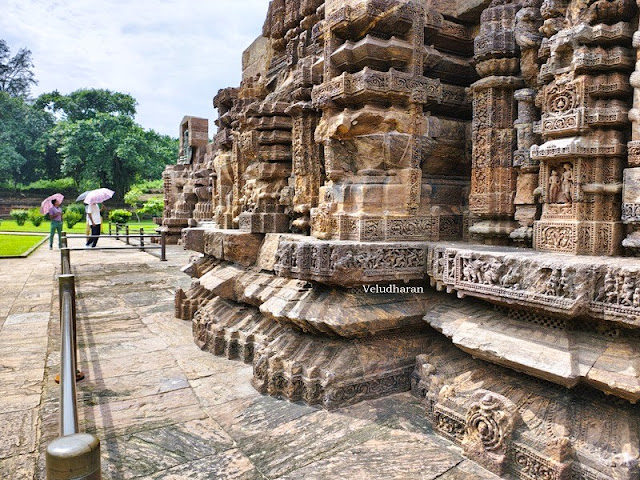














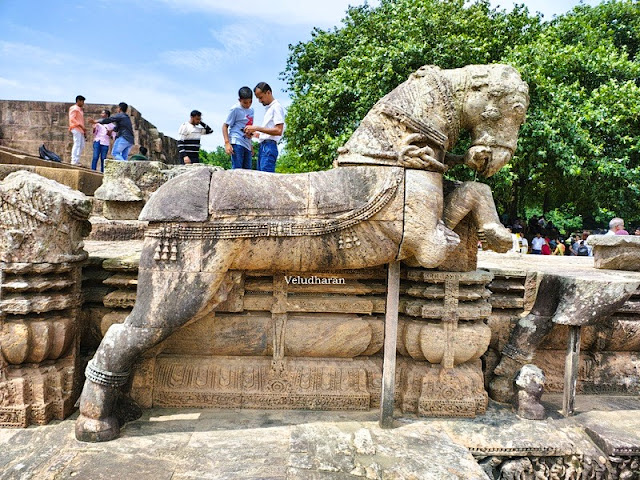









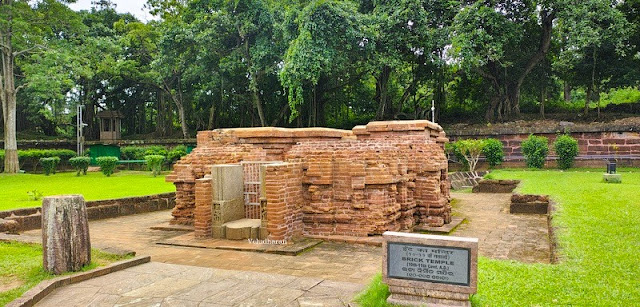

















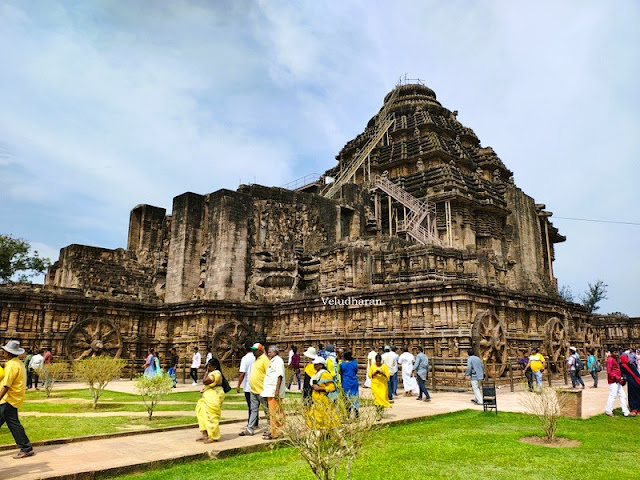







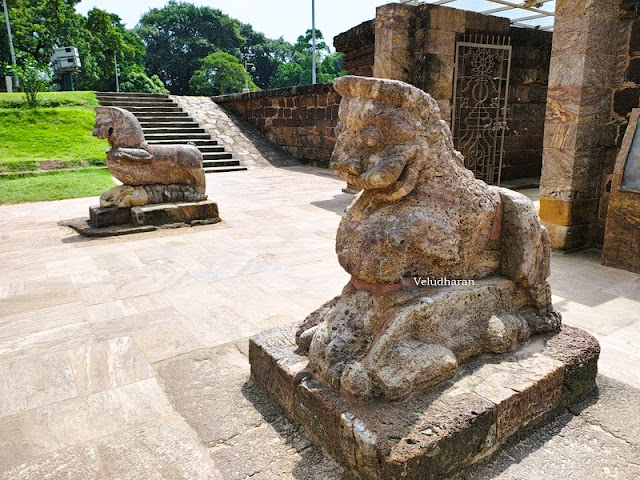


No comments:
Post a Comment